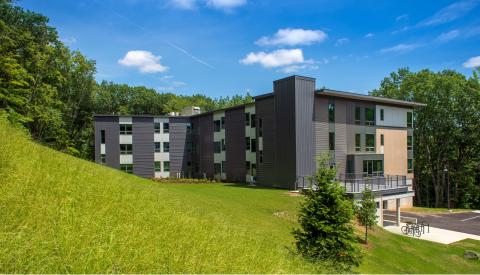LIHTC housing leads to higher incomes and educational attainment

Posted by Mia Watson on Thursday, March 12, 2020 - 8:33am
New national research from the Congressional Joint Committee on Taxation finds that children who grow up in housing funded by the Low-Income Housing Tax Credit Program (LIHTC) program are more likely to enroll in higher education programs and have higher earnings as adults. The federal LIHTC program, which is administered in Vermont by VHFA, is the largest single source of funding for affordable rental housing development in the state.
Using tax records, the study compared outcomes among people who had lived in LIHTC-funded housing for different periods of time. The study found that every year spent living in LIHTC housing as a child corresponded to a 3.5 percent increase in the likelihood of attending a four-year higher education program and a 3.2 percent increase in earnings as an adult.
The study suggested several possible reasons for the improved outcomes. If the LIHTC apartments were located in a more affluent neighborhood than families would otherwise be able to afford, the children could be benefiting from attending better schools, with access to more supportive resources. However, the improvement in outcomes persisted even the study when controlled for factors such as the income and poverty rates of the neighborhood. Alternatively, increased financial stability from living in LIHTC housing could result in parents having more time and resources to devote to their children. In addition, a more stable living situation has been demonstrated to improve educational outcomes among children.
Tenants living in VHFA-financed housing experience higher levels of housing stability than other renters. The median VHFA tenant has lived in their apartment for four years and three months, compared to two years for all Vermont renters, according to Census Bureau estimates. Vermont’s lower income renters likely move even more often than the median for all renters, given that low-income households generally tend to move more frequently than high-income households.
This study adds to the growing body of evidence on the importance and effectiveness of the LIHTC program. LIHTC tenants tend to have much lower incomes than most renters and would struggle to find affordable housing without subsidized apartments. Tenants in VHFA-financed apartments earn a median income of $16,702 annually compared to $37,759 for all Vermont renters. Subsidized housing can result in better health outcomes for tenants through improved financial security, reduced stress and a safer living space. LIHTC housing can also positively impact the neighborhood in which it is built, increasing property values and tax revenue and decreasing crime rates.
Pictured: Wentworth Community Housing in White River Junction. Photo courtesy of Housing Vermont. Wentworth was developed using Low Income Housing Tax Credits awarded by VHFA.

